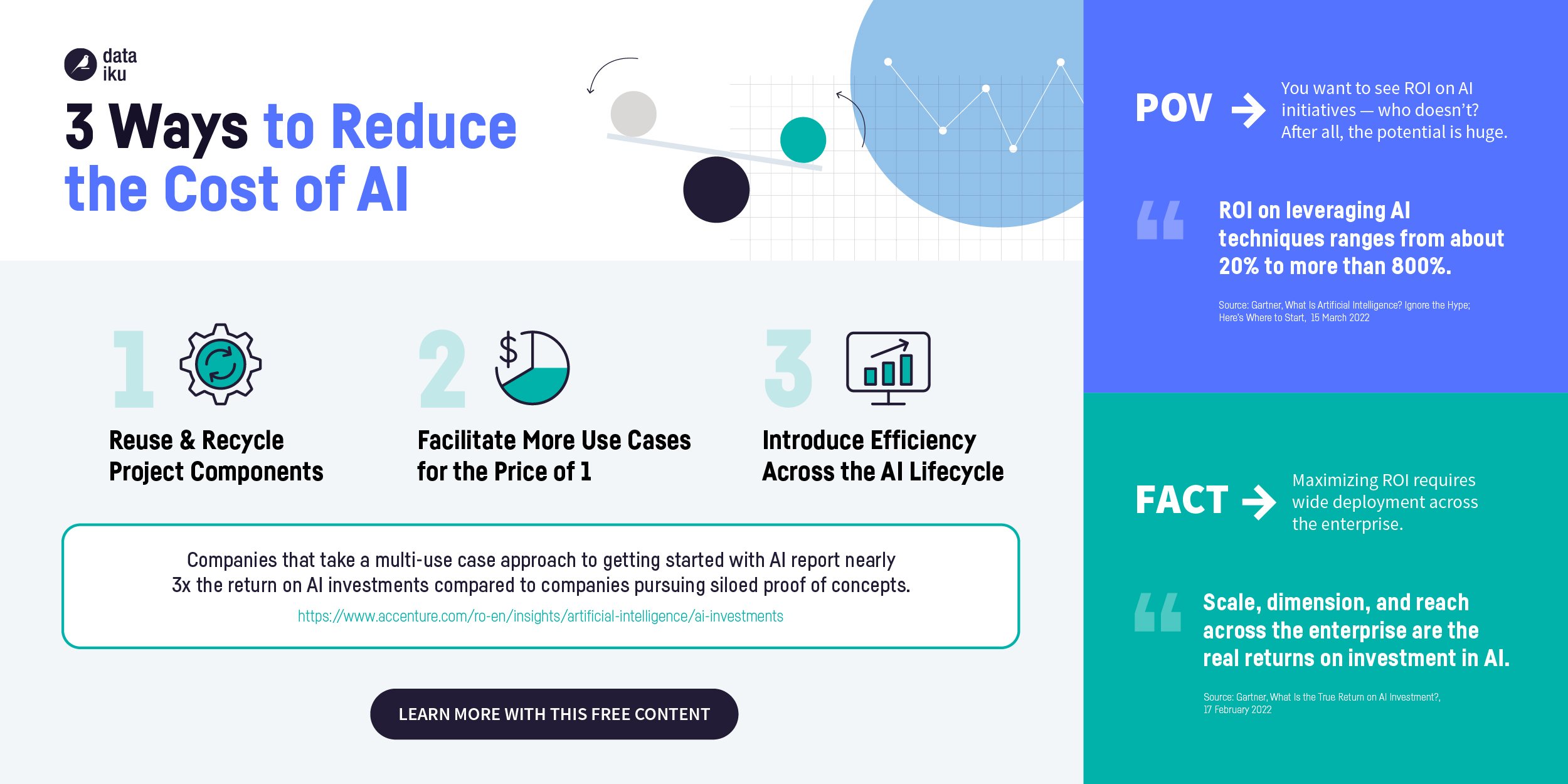Staring down the barrel at times of economic uncertainty, keeping financial strategies clean and cutting away unnecessary costs is a must-do for organizations. However, the headache starts as organizations’ leaders attempt to determine where exactly these cost reductions are feasible. New AI efforts and initiatives often draw attention when the time comes to cut costs, even though those very programs can help optimize P&L strategies.
At the same time, it’s true that AI initiatives can be costly if they’re not implemented correctly. The people can be expensive, the technology can be resource-intensive if you don’t control it, and the business needs can be unqualified. Under the pressure of these concerns, AI initiatives can freeze. Luckily there are ways that these cost worries can be addressed, placing your organization back en route to Everyday AI.
In this infographic, we introduce three key ways to implement an AI approach that will significantly reduce the cost of AI integration and capture the AI ROI that organizations desire and count on under the influence of a turbulent economy.
What else can be done?
Another Cost Reducing Approach: FinOps
In an effort to decrease conflict and cost simultaneously, more and more organizations are adopting a philosophy where finance, IT, and business teams work together with a value-oriented mindset. In this approach, teams work towards a common goal of successfully delivering key projects in a cost-effective manner. This particular approach has coalesced around the term FinOps, and machine learning (ML) projects are certainly no exception to this finance-friendly approach.
It’s not a secret that ML is inherently resource-intensive. Storing and processing vast amounts of data and training complex models inevitably translates to high costs (but also high potential for significant ROI). As ML matures, it needs to be cost-accountable, and the sooner ML teams work on cost management, the better. Additionally, most ML projects are using public cloud infrastructure now (e.g., AWS, Azure, Google) where cost control is critical. A notable takeaway here is that further attention to FinOps will prove necessary as organizations move ahead with ML innovation in years to come, and this is especially the case given the growing concern over the state of the economy.







